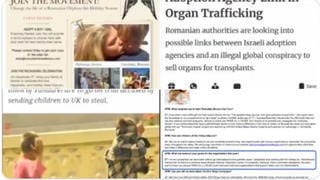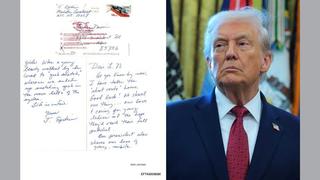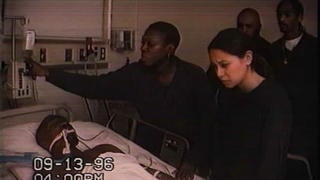
Does medical research show COVID-19 is not transmitted in the air and that infection risk is unaffected by distance? No, neither claim is true: The claims ignore the accumulating recent evidence that airborne coronavirus is the major mode of infection. The claims ignore scientists' peer-reviewed conclusions -- which are based on what the full universe of study data show -- in order to focus on a single data point that supports the claim. Called "cherry-picking," this kind of mis-interpretation takes advantage of the scientific tradition of disclosing data outliers in the interest of transparency. The U.S. Centers for Disease Control and Prevention have reiterated guidance that people can reduce their risk of infection through social distancing, avoiding crowds in enclosed spaces and by wearing masks to prevent spreading or breathing in coronavirus.
The claim appeared in a video (archived here) published on Instagram on November 13, 2020 under the title "Contradictions in the airborne spread of SARS-CoV-2.". The text introduction reads:
Wisdom means looking at things from multiple perspectives. Clinical evidence that goes against the popular narrative continues to be suppressed, ignored, flagged, and even demonized. Science, real science, is about looking at ALL sides, ALL possibilities, and questioning ALL aspects of a hypothesis. When new data is presented, there's a massive tendency to shun it... to fight against it. Especially if it doesn't fit the worldview we've accepted.
With a new disease such as COVID-19, which arose in December of 2019, evidence accumulates over time and early hypotheses are proven wrong, replaced by hypotheses that better describe the data. As more facts become known, they make self-evident truths more obvious.
Shawn Stevenson of The Model Health Show argues in the Instagram video that there are contradictions in the research on aerosol spread of COVID-19.
That he was able to read studies and pluck out individual anecdotes that cut against the grain of overall findings disproves his claim that "clinical evidence that goes against the popular narrative continues to be suppressed."
In his 6-minute video on Instagram, Stevenson selectively highlights outdated data and only presents one side of the argument -- that, for the most part, COVID-19 is not spread by proximity and through the air. Although the Centers for Disease Control and Prevention (CDC) and the World Health Organization (WHO) were slow to cite airborne transmission, particularly aerosol transmission, studies in the past couple of months have shown that aerosol transmission is viable.
Stevenson, who apparently doesn't see it that way, cites five studies done this year to make his point.
The first one he cites offers a good example of how he chooses some data, but ignores plainly stated contradictory information. So, for example, he points out that the results of a study published by the Lancet on June 27, 2020 says:
SARS-CoV-2 spreads person-to-person through close contact and causes COVID-19. It has not been solved if SARS-CoV-2 might spread through aerosols from respiratory droplets; so far, air sampling has found virus RNA in some studies but not in others.
But he neglects to quote the next two sentences:
However, finding RNA virus is not necessarily indicative of replication-competent and infection-competent (viable) virus that could be transmissible. The distance from a patient that the virus is infective, and the optimum person-to-person physical distance, is uncertain.
And he fails to quote other segments of the study that refute that distance does not matter. A section labeled "Findings" makes the following points:
Transmission of viruses was lower with physical distancing of 1 m or more, compared with a distance of less than 1 m ... ; protection was increased as distance was lengthened ... . Face mask use could result in a large reduction in risk of infection ... with stronger associations with N95 or similar respirators compared with disposable surgical masks or similar ... . Eye protection also was associated with less infection ...
The study circles back to reiterate the points about distance and masks:
From a policy and public health perspective, current policies of at least 1 m physical distancing seem to be strongly associated with a large protective effect, and distances of 2 m could be more effective. ...
For the general public, evidence shows that physical distancing of more than 1 m is highly effective and that face masks are associated with protection, even in non-health-care settings ...
The second academic paper he cites was published by the CDC on March 2, 2020, in the early days of the COVID-19 epidemic, when not as much was known compared with today. The test subject was a hospital in China, and the study was financially supported by the National Major Research & Development Program. From that paper, Stevenson says:
Virus was widely distributed on floors, computer mice, trash cans, and sickbed handrails and was detected in air ≈4 m from patients.
And then he adds that in studying aerosol transmission in the hospital's ICU and the general ward (GW) the scientists:
obtained positive test results for 35% (14 samples positive/40 samples tested) of ICU samples and 12.5% (2/16) of GW samples.
But he neglects to cite the last sentence in the same paragraph, which says:
These results confirm that SARS-CoV-2 aerosol exposure poses risks.
He also failed to mention two of the conclusions the paper's authors penned:
- SARS-CoV-2 was widely distributed in the air and on object surfaces in both the ICU and GW, implying a potentially high infection risk for medical staff and other close contacts.
- the SARS-CoV-2 aerosol distribution characteristics in the GW indicate that the transmission distance of SARS-CoV-2 might be 4 m.
And finally, he doesn't cite the study's final conclusion, which highlights the prevalence of aerosol transmission:
Overall, we found that the air and object surfaces in COVID-19 wards were widely contaminated by SARS-CoV-2.
The third study Stevenson cites was published by Cambridge University Press on March 5, 2020, still in the early days of the pademic. That study looked at infection control among health care workers (HCW) in Hong Kong during the first 42 days of 2020. Stevenson cited two passages:
Of 413 HCWs caring for these confirmed cases, 11 (2.7%) had unprotected exposure requiring quarantine for 14 days. None of these was infected, and nosocomial transmission of SARS-CoV-2 was not observed. ... not in 8 air samples collected at a distance of 10 cm from the patient's chin with or without wearing a surgical mask.
At that point, he asks viewers:
"Why aren't they finding it in the air?"
But the study states plainly in its Conclusion:
Appropriate hospital infection control measures was able to prevent nosocomial transmission of SARS-CoV-2.
The fourth paper he cited was published on April 4, 2020 and was titled: "Risk of nosocomial transmission of coronavirys disease 2019: an experience in a general ward setting in Hong Kong."
Stevenson quotes the study's Conclusion:
Our findings suggest that SARS-CoV-2 is not spread by an airborne route, and nosocomial transmissions can be prevented through vigilant basic infection control measures, including wearing of surgical masks, hand and environmental hygiene.
He uses this statement to qualify saying:
- When they've been shown not to work in multiple clinical trials, it moves away from being science to being superstition.
- Data continues to show that what we've been told is actually not the case.
- Superstition is being continually upheld right now more than ever.
But he neglected to mention the last sentence in the study:
Vigilance with basic infection control measures, including wearing of surgical masks, hand hygiene and environmental hygiene continues to remain fundamental and essential in the prevention of human-to-human transmissions of SARS-CoV-2.
The final paper Stevenson cited was published July 10, 2020 in the Science of the Total Environment journal and looked at indoor air measurement of COVID-2 patient rooms in the largest hospital in Iran. He cited this sentence toward the end of the article:
in this study all air samples which were collected 2 to 5 m from the patients' beds with confirmed COVID-19 were negative.
But Stevenson leaves out the next sentence:
Despite we indicated [sic] that all air samples were negative, however, we suggest further in vivo experiments should be conducted using actual patient cough, sneeze and breath aerosols in order to show the possibility of generation of the airborne size carrier aerosols and the viability fraction of the embedded virus in those carrier aerosols.
Scientists distinguish between droplet and aerosol (or airborne) transmission. The CDC explains it this way:
Droplet transmission consists of exposure to larger droplets, smaller droplets, and particles when a person is close to an infected person. Airborne transmission consists of exposure to smaller droplets and particles at greater distances or over longer times.
And the World Health Organization characterizes it this way:
The virus can spread from an infected person's mouth or nose in small liquid particles when they cough, sneeze, speak, sing or breathe heavily. These liquid particles are different sizes, ranging from larger 'respiratory droplets' to smaller 'aerosols'.
The question of aerosol transmission was not well-understood in the early months of the pandemic, when much was made of the coronavirus ability to survive on surfaces, where it was thought people were picking it up and becoming infected. As evidence of air transmission accumulated, the WHO came under strong criticism during the summer from scientists who believed the agency was not leading the charge. NBC News published a story on July 6, 2020 noting that 239 scientists had written to the WHO asking the agency to step up its efforts. The headline:
Hundreds of scientists claim WHO is downplaying risk of airborne spread of corona virus
The New York Times had broken the story on July 4, 2020 with headlines that said:
239 Experts With One Big Claim: The Coronavirus Is Airborne.
The W.H.O. has resisted mounting evidence that viral particles floating indoors are infectious, some scientists say. The agency maintains the research is still inconclusive.
The CDC also seemed to fumble on aerosol transmission of the virus. The BMJ, a 180-year-old international research journal, reported:
On Friday 18 September the CDC posted information on its website that for the first time said covid-19 could be spread through "respiratory droplets or small particles, such as those in aerosols, produced when an infected person coughs, sneezes, sings, talks, or breathes. These particles can be inhaled into the nose, mouth, airways, and lungs and cause infection. This is thought to be the main way the virus spreads."
It added, "There is growing evidence that droplets and airborne particles can remain suspended in the air and be breathed in by others and travel distances beyond 6 feet (for example, during choir practice, in restaurants, or in fitness classes). In general, indoor environments without good ventilation increase this risk."
On Monday 21 September the CDC removed the information about aerosols and distances greater than 6 feet (1.8 m) and replaced it with previous information that warned only about droplets and advised people to stay 6 feet apart.1
The CDC said that a draft version of proposed changes had been posted in error. The agency said it was updating information about airborne transmission of covid-19 and would post the new information once the review was completed.
Some observers said the CDC had bowed to political pressure from the White House. The Philadephia Inquirer published a story on September 25, 2020 with the headline:
As CDC reverses itself on COVID-19, Americans are losing trust, warn public-health veterans.
Then on October 5, 2020, the CDC reversed itself again, saying in a daily report:
The principal mode by which people are infected with SARS-CoV-2 (the virus that causes COVID-19) is through exposure to respiratory droplets carrying infectious virus.
















